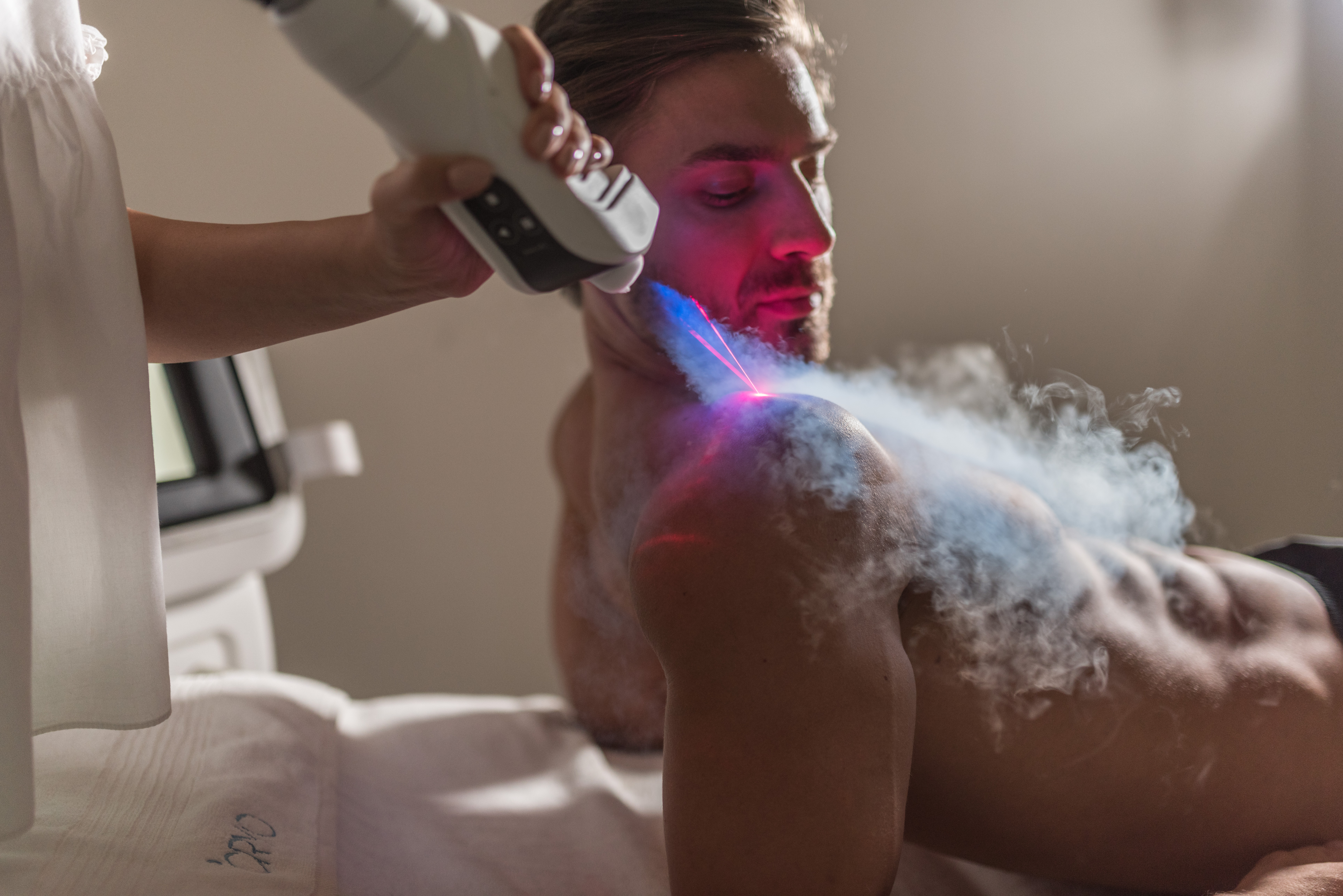How Sports Cryotherapy WILL Boost Your Fitness To The Next Level
From helping reduce swelling and muscle soreness to boosting blood flow to the tissues, sports cryotherapy is something that’s becoming increasingly popular among athletes, celebrities and health and fitness enthusiasts alike. But how exactly does this form of sub-zero therapy work and how does it help your body? We’ll cover how cryotherapy works, its benefits and how it can take your fitness to the next level.
What is Cryotherapy & How Does it Work?
If you have an injury, such as a bruise or a sprain, what do most people tell you to do? They tell you to put ice on it. And, in essence, that’s how cryotherapy works.
Cryotherapy is a form of cold therapy which involves exposing the body to sub-zero temperatures for short periods of time, usually in the form of cryogenically cooled air. This is where clients are placed into contact with cold breathable air, which is a safer alternative to liquid nitrogen – another method that can cause asphyxiation.
Some major sporting achievements are thought to have triggered its boom in popularity – for example, Leicester City winning the Premier League title in 2016, despite the odds being against them at 5,000/1. The squad were regular users of the treatment and it helped them maintain a highly-intensive and physically-demanding playing style.
Today, cryotherapy is increasingly being used by top-level athletes and being marketed to any fitness-conscious individual, from amateurs to professionals, looking to seek an edge. But how does it work?
Cryotherapy helps recovery and rehabilitation processes by activating the body’s natural recovery mechanisms via extreme cooling. The therapy works in a similar way to icing an injury – it narrows blood vessels which reduces blood flow to an area which temporarily reduces the swelling and inflammation that might normally accompany an injury. Instead of isolating the cold to a mere body part, cryotherapy exposes the chill to the whole body.
But aside from injury recovery, courses of cryotherapy allow athletes to speed up muscle recovery and reduce fatigue, allowing more frequent and intense workouts to take place.
How Can It Boost Your Fitness?
Muscle soreness, also known as delayed onset muscle soreness (DOMS), is due to microscopic tears in your muscles that happen when you exercise, particularly when they have to work harder than they’re used to. These tears heal and stronger muscles form in their place, so the soreness grows less over time as your body becomes more used to it.
The soreness is normal and even happens to elite athletes who have been training for years. But it is, understandably, irritating and frustrating, especially when you’re forced to take time off from training. This can set you back and affect your future performance.
Evidence has suggested that cryotherapy prevents or reduces the level of DOMS you would experience after working out. As a result, you can continue to train harder and for longer.
It’s not just recovery either – cryotherapy activates your body’s ‘fight or flight’ response, which is a physiological reaction to a perceived harmful event, attack or threat to survival. In this case, because of the sub-zero temperatures experienced with cryotherapy, the body perceives this as a threat to survival and the response kicks in.
Adrenaline is released which increases your heart rate and blood circulation, so more nutrients and oxygen can reach your major muscle groups. This means as well as allowing you to train for longer and more frequently, your body recovers much quicker and you become stronger. This leads to you being able to train even harder and more efficiently for even longer.
So What’s the Evidence Behind it?
Ice has long been recommended by health and fitness professionals in reducing and treating muscle soreness as a result of exercise. And there’s evidence to support it.
In 2000, a study conducted at San Francisco State University examined the effect that interval cryotherapy had in decreasing fatigue during weight lifting. Results showed that the participants who received cryotherapy were able to lift more weights at greater speed and power than the ones who didn’t.
A 2015 study supports the San Francisco experiment when it found that cryotherapy significantly reduced muscle soreness and successfully re-established homeostasis within the body so participants could continue training.
There are also various articles written by journalists who have tried and tested cryotherapy. For example, Mark Barroso from Muscle and Fitness reported that his leg muscles felt lighter and he had energy that lasted for the entire day.
Athletes and Influencers Who Use Cryotherapy
Cryotherapy is relied on by many athletes and celebrities, particularly from the sporting world, from the NBA to elite soccer. Despite using cutting-edge science, cryotherapy as a principle is an age-old therapy which continues to be popular and regularly used to enhance health and fitness.
Professional dancers from Dancing With The Stars, including Derek Hough and Mark Ballas, are known to have used cryotherapy to keep their bodies at the height of fitness. Dancers endure long rehearsals and intense training sessions which inevitably leaves their bodies sore. Whole body cryotherapy can enhance their recovery far better than an icepack on a sore muscle or joint ever will, which allows dancers to continue training – precisely why the cast of DWTS turn to the therapy.
And it’s not just athletes who swear by cryotherapy. Daniel Craig reportedly used it to help maintain his physique for his role as James Bond. The health benefits of the therapy helped him take care of his body so he could continue with his gruelling training schedules, harder and stronger than ever before.
{{cta(‘5a11f8da-c8f2-4916-aea7-574a35972a9a’,’justifycenter’)}}





